During a few days in summer Maui is abuzz with people near the ocean asking “Can you smell that? What is it?” or asking on social media “Does anyone know what that smell is in the air?”
Many people assume it is just the normal scent of the ocean. Others think there has been some kind of chemical sprayed nearby. It is described as a “heavy” scent by some, or as soapy or fishy by others. But many Hawai‘i residents know that the scent is a byproduct of coral spawning – one of the ways corals reproduce. Once you know that, it is something to look forward to every summer! It is an encouraging sign that corals are producing new life.
There are about 50 species of reef-building corals in Hawai‘i, but rice coral (Montipora capitata) produces the strongest scent here after spawning, and it is the one that we are most likely to notice. It typically spawns in June, July and August on the night of the new moon and a few nights after between 8:30 and 9 PM.
Rice coral gets its name from projections of its skeleton that look like tiny grains of rice set on end.
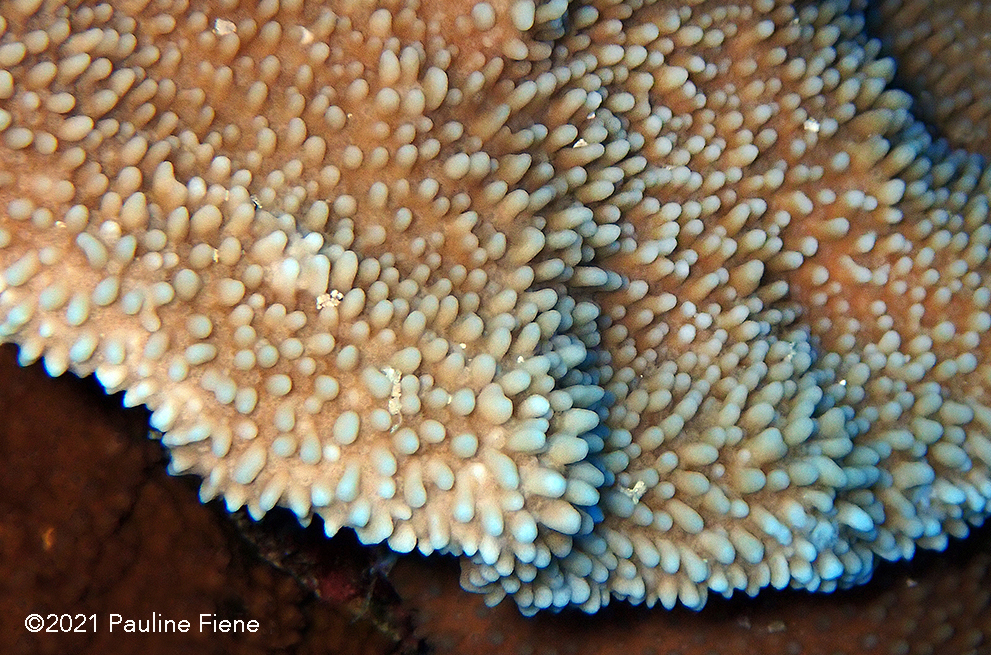
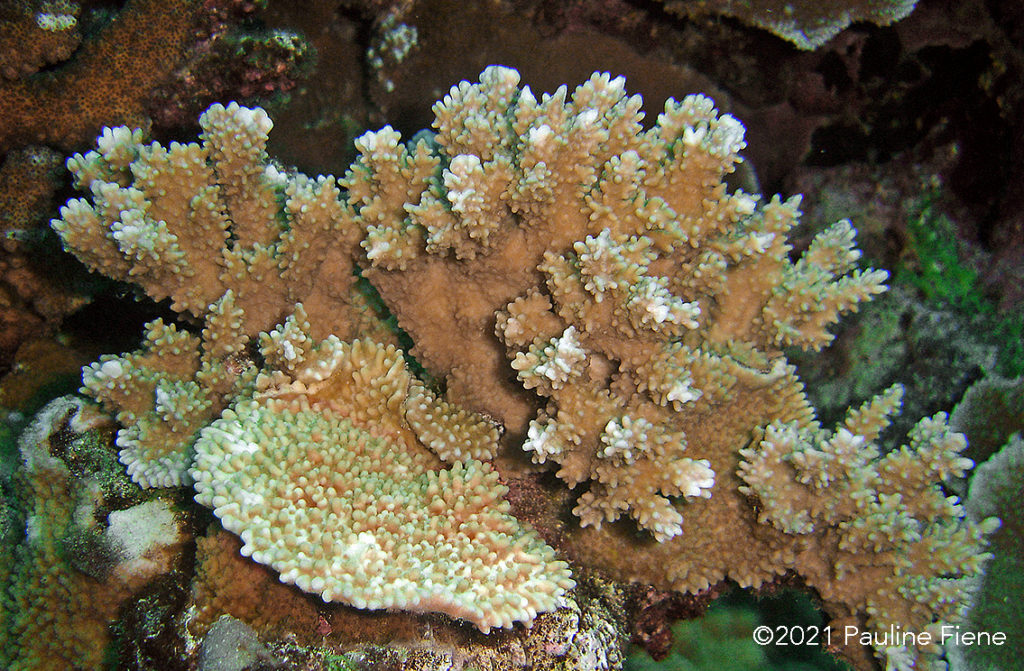
It can grow in several different forms such as flat plates or as branching fingers, as pictured above.
Synchronizing
Because corals are attached to the bottom they can’t seek out mates as other animals do. When it is time to reproduce they have to release their eggs and sperm into the water and “hope” that they come into contact with the eggs and sperm from other coral colonies. This ensures genetic diversity and produces individuals more or less suited to changing environmental conditions. To accomplish this, participating coral colonies must release their eggs and sperm within the same tiny 15-minute-or-so window of time so the sperm and eggs are in close proximity. HOW can they synchronize this event so precisely? Well, they use the only timepieces they have which are cues in nature.
The first cue is the seasonal change in ocean temperature which causes eggs and sperm to be fully developed by June, July, and August. Next, the lunar cycle determines which nights in those months spawning will occur. Corals have blue-light-sensing photoreceptors that allow them to detect the low levels of light reflected by the moon. And finally the time of sunset determines what time on those nights spawning will occur. So, simplified, ocean temperature determines the months, the moon phase determines which potential nights in those months, and the time of sunset determines what time rice coral spawning will commence.
Spawning
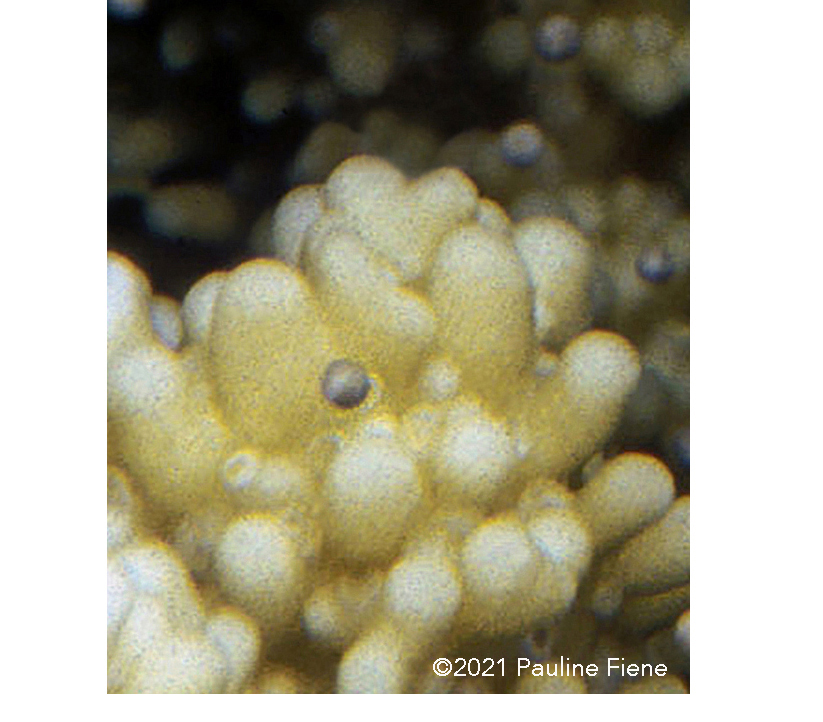
Maui, Hawai‘i.
When the seasonal, lunar, and solar cues align, each rice coral polyp releases a tiny spherical bundle of eggs and sperm.
It takes several minutes for the delicate bundle to completely emerge and float free of the polyp.
The photo to the right shows a rice coral polyp at the exact moment that it is releasing a bundle of eggs and sperm. These bundles are about the size of a pinhead.
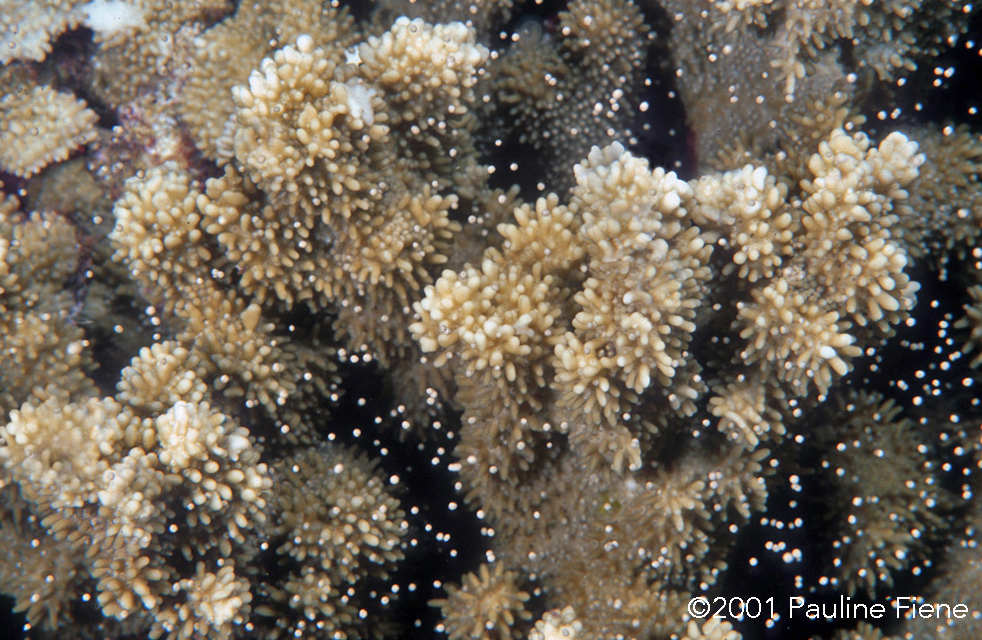
Thousands of these bundles rise ever-so-slowly to the surface of the ocean. This puts them all on the same plane and increases the chances for fertilization. Once there, the movement of the water jostles the bundles, and the eggs and sperm are freed. Immediately we can smell the various chemicals given off by the eggs which float on the surface. The sperm swim just below the surface and fertilize the eggs from colonies that are not their own. The fertilized egg begins cell division and soon a coral larva develops while drifting in the water.
During these spawning events, as in most species of animals, rice corals produce many many more sperm than eggs. Eggs are more energy-intensive to produce and so there are far fewer of them. In spite of that, not all the eggs are successfully fertilized. When we are out on the boat on mornings after spawning we see slicks of fertilized and unfertilized eggs, as well as associated spawning chemicals, on the surface of the ocean. If the tradewinds are absent we notice the scent throughout the whole day – even on land!

Just the beginning
Spawning is just the beginning of the reproductive process, however. The coral larvae will continue to develop for days in the water. When they are ready, the tiny larvae swim toward chemical cues on the reef that indicate a favorable environment for rice coral. Each larva that has made it this far will then attach to the bottom, metamorphose into a polyp, clone more polyps and begin secreting a calcium carbonate skeleton – the beginning of a new coral colony.
It may sound strange but we have a big part to play in all of these steps. The tiny coral larvae are particularly vulnerable to chemicals that end up in the water such as pesticides, drugs, petroleum products, sunscreens and others chemicals. And the larvae need a place to attach that is free of sediment which washes into the ocean from construction projects and agriculture. They also need an environment that isn’t crowded by algae overgrowth fed by fertilizers entering the ocean. The success of coral larvae surviving and finding a home are important reasons for us to try to eliminate these toxins from entering the ocean.
After years of growth, the new rice coral colony will be mature enough to begin producing eggs and sperm. Then, responding to cues from the moon and the sun, it will release its eggs and sperm at just exactly the right time to mix with the eggs and sperm of other colonies. And the cycle will begin again.
If you want to know even more
Each of the roughly 50 species of reef-building corals in Hawai‘i has its own set of “time slots” during the year when it spawns or releases larvae. The majority of species spawn in the spring or summer, but a few reproduce year-round. Many spawn during the full or new moon, but not all. Most species spawn at night but some spawn during daylight.
There are a couple reasons we don’t detect the scent of coral spawning for all the different species. First, there are only a handful of coral species that are abundant in Hawai‘i and produce massive quantities of eggs and sperm during a spawning event. Rice coral, finger coral and lobe coral are the most abundant coral species in Hawai‘i and the ones whose spawn we are most likely to detect. Second, the eggs and sperm of most species do not rise to the surface. Instead some sink to the bottom, and others are neutral in the water. Only rice coral produces eggs and sperm that rise to the surface in such huge quantities that we can easily smell them on land.
So keep your nose alert during the few days and nights after the new moon in June, July and August. If you catch the scent you will be rewarded with the knowledge that hundreds of colonies of rice coral have just spawned a new generation – in synchrony. Truly a wonder of nature.
Written by Pauline Fiene.
Spawning dynamics in the Hawaiian reef-building coral Montipora capitata
Coral spawning: a race against time by Shayle Matsuda. An interesting blog article about rice coral spawning fieldwork.

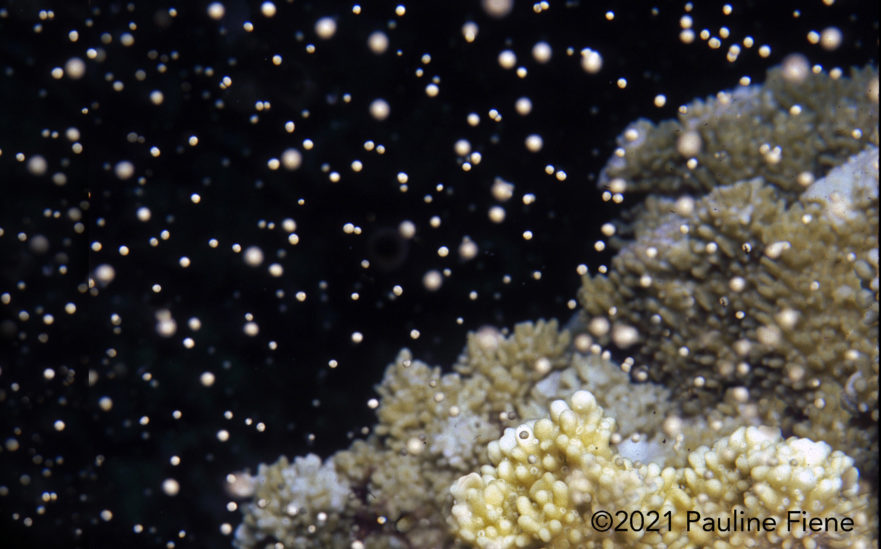
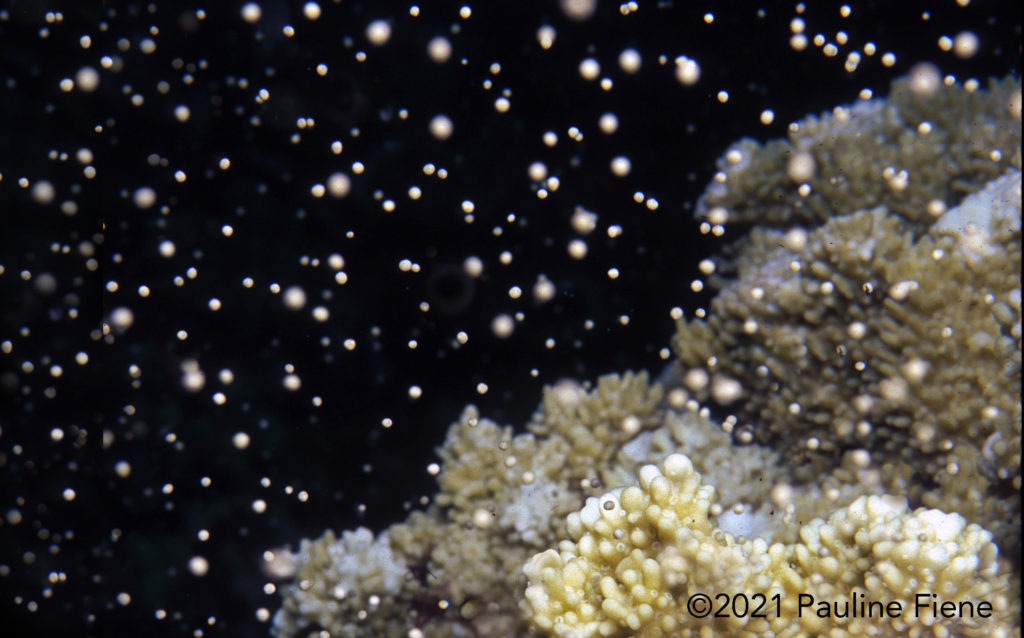
Comments 3
Pauline: Wonderful article. Geri & I have been diving with your crew on some of the days of spawning. An interesting smell. Hope you & the gang are doing well. Hope to get out diving with you after this Covid thing dies down. (if ever)
We miss you all
Wayne
Love love love learning more from you all the time! Thanks for this.
Aloha,
Rachel
FABULOUS … pics and article both! I so look forward to getting back to the islands to see my friends above and below the surface again … soon! – Charlie